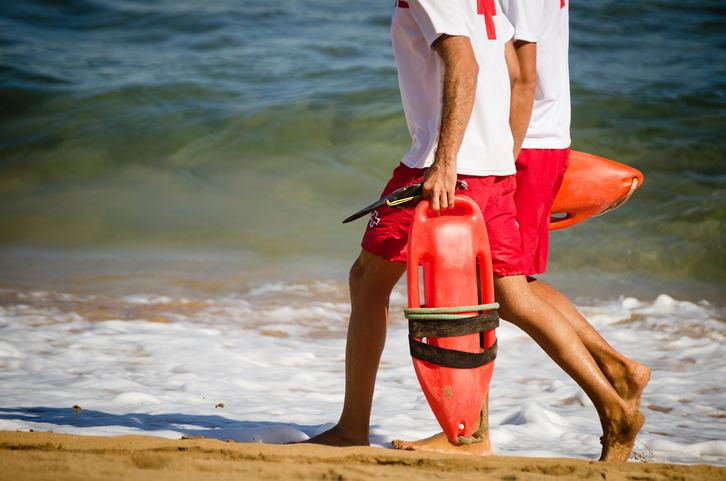Life Style
A Day in the Life of a Lifeguard: Status and Preparation
Published
1 week agoon
By
Berlin
Morning Routine:
A lifeguard’s day starts with the first light of day break. Rising early permits them to prepare mentally and physically for their responsibilities. Their morning custom remembers a healthy breakfast rich for proteins and starches, giving the essential energy to the demanding errands ahead.
Physical Fitness:
Physical fitness is a foundation of a lifeguard’s regular routine. They take part in a different scope of exercises to keep up with top physical condition. Strength training sessions assist with building muscle and perseverance, while cardio workouts work on cardiovascular health.
Regular stretching routines improve adaptability, aiding in quick and precise developments during rescues. Lifeguard training teaches additionally integrate exercises, for example, swimming and running into their fitness routine, mimicking genuine situations they might experience on duty.
Mental Preparedness:
Notwithstanding physical fitness, mental preparation is crucial for lifeguards. They practice care techniques like contemplation and profound breathing exercises to keep cool-headed and focused during emergencies.
Perception exercises assist them with mentally practicing rescue situations, ensuring they can answer quickly and really when confronted with basic circumstances. Lifeguards additionally participate in mental difficulties, for example, riddles or puzzles to level up their mental skills and decision-production skills.
Reviewing Protocols:
Before their shifts, lifeguards carefully audit emergency protocols and techniques. This incorporates getting to know CPR techniques, first aid protocols, and the proper utilization of rescue equipment. They additionally stay updated on the most recent safety guidelines and guidelines, ensuring they are exceptional to deal with any circumstance that might emerge.
Equipment Check:
A careful equipment check is essential for a lifeguard’s day to day routine. They review their rescue tubes, whistles, first aid units, and other essential gear to ensure everything is in ideal working condition. Regular maintenance and timely substitutions are crucial to ensuring the effectiveness of their equipment during emergencies.
Communication Skills:
Viable communication is a foundation of lifeguarding. Lifeguards go through training to improve their communication skills, learning to pass on data clearly and compactly. They practice active listening techniques to figure out patrons’ requirements and concerns, encouraging a sense of trust and consolation. Clear communication is crucial during emergencies, empowering lifeguards to arrange with their team and give directions to people in trouble.
Continuous Education:
Learning is a lifelong journey for lifeguards. They take part in regular training sessions, workshops, and classes to remain updated on the most recent developments in water safety and rescue techniques. High level courses in lifeguarding, for example, vast water rescue or high level first aid, improve their skills and preparedness for testing circumstances. Lifeguards likewise seek after certifications in specialized areas like pool management or aquatic treatment, extending their knowledge base and career opportunities.
Staying Informed:
Lifeguards stay informed about environmental elements that can impact water safety. This incorporates monitoring weather circumstances, water flows, and potential hazards like marine life or lowered objects. They get regular updates from important authorities and organizations, empowering them to make informed decisions and go to proactive lengths to alleviate risks.
Team Coordination:
Teamwork is fundamental in lifeguarding. Lifeguards work together intimately with their team individuals, rehearsing coordination and communication strategies to ensure a durable response to emergencies. Regular team gatherings and drills improve coordination and acclimate team individuals with their roles and responsibilities during emergencies. Lifeguards likewise construct compatibility and trust inside their teams, cultivating a supportive and proficient working environment.
Situation Reenactments:
Situation reenactments are an important training device for lifeguards. These practical situations repeat emergency circumstances, permitting lifeguards to apply their skills and knowledge in a controlled environment.
Recreations might incorporate drowning incidents, spinal injuries, or mass rescue situations, provoking lifeguards to make split-second decisions and execute composed rescue efforts. Debriefing sessions after recreations give significant feedback and bits of knowledge to continuous improvement.
Nourishment and Hydration:
Nourishment plays an imperative role in supporting lifeguards all through their shifts. They focus on adjusted dinners and snacks wealthy in supplements to fuel their bodies and keep up with energy levels. Hydration is similarly significant; lifeguards convey water containers or hydration packs to ensure they stay hydrated, particularly during hot and moist circumstances. Proper sustenance and hydration add to overall prosperity and execution on duty.
Continuous Vigilance:
Lifeguards keep a constant condition of vigilance while on duty. They filter their assigned areas regularly, noticing swimmers’ behavior, water conditions, and potential hazards. Lifeguards position themselves strategically to augment perceivability and response time if there should arise an occurrence of emergencies. They likewise use surveillance technology, for example, cameras or robots to upgrade monitoring capabilities and distinguish incidents quickly.
Post-Shift Survey:
In the wake of finishing their shifts, lifeguards conduct a careful survey of the day’s events. They record any incidents or close to misses, noticing areas for improvement and examples learned. Post-shift debriefings with partners or supervisors give significant experiences and advance continuous learning and development.
Lifeguards use feedback from these surveys to refine their skills, update protocols, and improve safety measures for future shifts.
Community Engagement:
Lifeguards actively draw in with the community to advance water safety awareness. They conduct educational sessions, demonstrations, and effort programs to instruct general society about drowning prevention, water rescue techniques, and beach safety guidelines.
Lifeguards likewise team up with schools, community focuses, and local authorities to execute water safety drives and missions. Building strong relationships with the community encourages a culture of safety and responsibility, diminishing the risk of water-related incidents.
Support Networks:
Support networks play a crucial role in a lifeguard’s life. Lifeguards structure strong bonds with their partners, coaches, and supervisors, making a network of support and kinship. They share experiences, offer support, and give help to one another, cultivating a positive work environment. Peer support programs, guiding administrations, and mental health resources are accessible to lifeguards to ensure their prosperity and resilience in demanding circumstances.
American Lifeguard Association (ALA):
The American Lifeguard Association (ALA) is a famous association that plays a critical role in lifeguard training and certification. Lifeguards look for certification through ALA-certify programs, which stick to thorough standards of professionalism, ability, and safety.
ALA certifications envelop a comprehensive educational plan covering water rescue techniques, emergency response protocols, CPR and first aid skills, and risk management strategies. Lifeguards who go through ALA certification show a guarantee to greatness and uphold the best expectations of lifeguarding capability.
In conclusion, the day to day routine of a lifeguard is multi-layered, enveloping physical fitness, mental preparedness, continuous education, teamwork, and community engagement. Lifeguards’ devotion to availability and preparation ensures the safety and prosperity of beachgoers, swimmers, and water aficionados, making aquatic environments more secure for everybody. Their unfaltering vigilance, professionalism, and obligation to lifesaving contribute fundamentally to water safety drives around the world.

Broadway Shows by Year – Opened in 2023

Medical Billing Process and Practices to Reduce Costs

Andre Hakkak: A Financial Titan’s Journey and Net Worth Breakdown

Michelle Smallmon: A Comprehensive Overview

Revolutionizing Content: The Latest Innovations in Video Dubbing

The Role of Scalp Serum in Treating Scalp Conditions

An Introduction to Lifeguard Classes

Introduction to Appeal Case Preparation

Shop Personalized Heart Bracelets: A Timeless Gift of Love

What is Simp City Forum & How to Use the Forum

What is Evırı? Everything You Need to Know

Maximizing Efficiency and Accuracy with Construction Takeoff and Estimating Services

Comprehensive Guide to Roofing Takeoff Services, Piping Estimating Services, and Drywall Takeoff Services

Unveiling the Mysteries and Benefits
Showcase Of Ark: Survival Evolved (2017) Icons And Banners

Metal Gear Solid 3 Remake: Everything We Know So Far

Los Angeles News and Events

A Guide to a Healthy Life with Well Health Organic

Pedrovazpaulo Executive Coaching

Unlock Your Potential with Pedro Vaz Paulo Coaching

Broadway Shows by Year – Opened in 2023

Medical Billing Process and Practices to Reduce Costs

Andre Hakkak: A Financial Titan’s Journey and Net Worth Breakdown

Michelle Smallmon: A Comprehensive Overview

Revolutionizing Content: The Latest Innovations in Video Dubbing

The Role of Scalp Serum in Treating Scalp Conditions

An Introduction to Lifeguard Classes

Introduction to Appeal Case Preparation

Shop Personalized Heart Bracelets: A Timeless Gift of Love












